OSHA's preliminary top 10 violations for fiscal year 2014 were recently announced at the National Safety Council Expo by the deputy director of OSHA's Directorate of Enforcement Programs, Patrick Kapust.
Before we cover those most cited standards, let's a look at a few statistics from 2013.
- The 3,929 fatal work injuries that occurred in private industry is
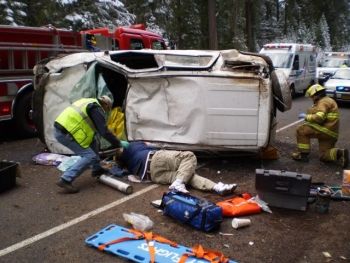 the lowest total since BLS began collecting this data more than 20 years ago.
the lowest total since BLS began collecting this data more than 20 years ago. - Transportation-related incidents accounted for 40% of all fatal work injuries, but declined in 2013.
- One out of six fatal work injuries was the result of violence – including suicide and homicide.
- Fatal work injuries involving contractors accounted for 17% of all fatal work injuries in 2013.
In some aspects things are better, but clearly, we still have much work to do. Based on 2013's numbers, on average, there are 85 deaths a week or more than 12 deaths every day. Despite being the lowest total since the fatal injury census was first conducted in 1992, that's still too many deaths!
Many, if not close to all, of these deaths are preventable with proper training and a conscience decision from all parties involved to do things as safe as possible and report unsafe actions. As you can see in the most frequently cited standards, many are still "doing it the way we always have done it." For some, this is laziness or a disregard for safety; and for others, it is simply ignorance to the rules and guidelines. The numbers below should be a reminder that we do still have much to do, and that will be hard without open dialogue and a decision to do better for the sake of all those who became a statistic below.
Top 10 Most Frequently Cited Standards for FY 2014:
- Fall Protection (Construction) (29 CFR 1926.501) 6,143 violations
- Examples being: failing to use fall protection correctly or failing to provide fall protection.
- Hazard Communications (29 CFR 1910.1200) 5,161 violations
- Examples being: failing to have safety data sheets (SDS) for each chemical in the workplace or chemical labeling mistakes.
- Scaffolding (Construction) (29 CFR 1926.451) 4,029 violations
- Examples being: loading scaffolds in excess of their capacity or failing to protect employees from fall hazards on scaffolds.
- Respiratory Protection (29 CFR 1910.134) 3,223 violations
- Examples being: lack of a written program or failing to train employees.
- Lockout / Tagout (29 CFR 1910.147) 2,704 violations

- Examples being: complete lack of a hazardous energy control program or failing to apply locks.
- Powered Industrial Trucks (29 CFR 1910.178) 2,662 violations
- Examples being: lack of operator training or forklifts not in safe operating condition.
- Electrical - Wiring Methods (29 CFR 1910.305) 2,490 violations
- Examples being: conductors enter boxes unprotected or employees are exposed to live contacts.
- Ladders (Construction) (29 CFR 1926.1053) 2,448 violations
- Examples being: using an inappropriate type of ladder for the job or using a ladder not designed for the load it is carrying.
- Machine Guarding (29 CFR 1910.212) 2,200 violations
- Examples being: not using guards at point of operation for machinery that may pose a hazard or guards are removed by employees.
- Electrical - General Requirements (29 CFR 1910.303) 2,056 violations
- Examples being: not having workers appropriately trained to avoid electric shock or electrocution or not guarding live parts.
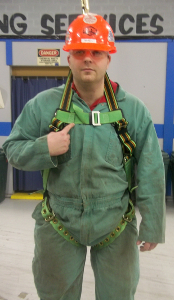

 disease (MND), Charcot disease, and many know it as Lou Gehrig’s disease (named after the famous baseball player from the 1920s and 30s who was forced to retire and died from ALS).
disease (MND), Charcot disease, and many know it as Lou Gehrig’s disease (named after the famous baseball player from the 1920s and 30s who was forced to retire and died from ALS).

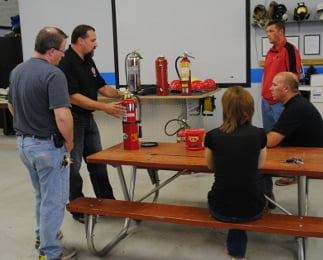
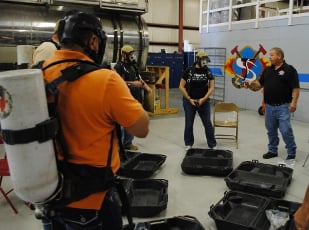 version of the previous topics and also includes Materials Handling in the mandatory topics, but adds 6 or so additional topics to be covered. The construction industry courses include even more additional topics for individual selection. The mandatory topics are different as well, tailored to include more construction specific topics, the most important difference is that of “Focus Four Hazards” which include:
version of the previous topics and also includes Materials Handling in the mandatory topics, but adds 6 or so additional topics to be covered. The construction industry courses include even more additional topics for individual selection. The mandatory topics are different as well, tailored to include more construction specific topics, the most important difference is that of “Focus Four Hazards” which include: 
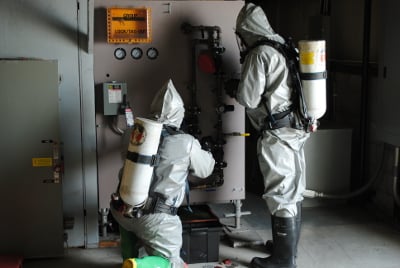



 Review OSHA's Common Responsibilities (
Review OSHA's Common Responsibilities ( ‘If PPE is to be used to reduce the exposure of ICS/UC workers to hazards, a PPE program should be initialized and maintained. This program should contain identification and evaluation of hazards in the scene and if use of PPE is an appropriate control measure; if PPE is to be used, how it is selected, maintained and its use evaluated; training of workers using the PPE; and vigilance of the program to determine its effectiveness in preventing worker injury or illness. For more on PPE, see
‘If PPE is to be used to reduce the exposure of ICS/UC workers to hazards, a PPE program should be initialized and maintained. This program should contain identification and evaluation of hazards in the scene and if use of PPE is an appropriate control measure; if PPE is to be used, how it is selected, maintained and its use evaluated; training of workers using the PPE; and vigilance of the program to determine its effectiveness in preventing worker injury or illness. For more on PPE, see  Fireworks themselves are dated back to 7th century China, where they were invented and used in many festivities. Fast forward to mid-17th century; Europe was blown away by Chinese fireworks and the popularity would rise and they were used for celebration of many important events. Finally in the late 18th century, the early European settlers brought this love of fireworks to this country and used them as rally devices, political attractions, and of course to celebrate important events.
Fireworks themselves are dated back to 7th century China, where they were invented and used in many festivities. Fast forward to mid-17th century; Europe was blown away by Chinese fireworks and the popularity would rise and they were used for celebration of many important events. Finally in the late 18th century, the early European settlers brought this love of fireworks to this country and used them as rally devices, political attractions, and of course to celebrate important events.
 Keep any type of ladder or pole (used to set up or light fireworks) at least 10 feet from any power lines.
Keep any type of ladder or pole (used to set up or light fireworks) at least 10 feet from any power lines.
 rays. The color and how expense they were mean nothing compared to the REAL reason we wear sunglasses.
rays. The color and how expense they were mean nothing compared to the REAL reason we wear sunglasses. UV radiation is not limited to just us humans either. Both plants and other animals are affected by it. For example, a plant's overexposure to the sun could mean affecting its photosynthesis. This can affect the growth of the plant, and therefore can potentially impact the structure of an ecosystem in a negative way. Animals, especially those with little to no hair, can get sunburn just like any of us. This is why pigs (and other similar animals) roll around in the mud, they use it like sunscreen!
UV radiation is not limited to just us humans either. Both plants and other animals are affected by it. For example, a plant's overexposure to the sun could mean affecting its photosynthesis. This can affect the growth of the plant, and therefore can potentially impact the structure of an ecosystem in a negative way. Animals, especially those with little to no hair, can get sunburn just like any of us. This is why pigs (and other similar animals) roll around in the mud, they use it like sunscreen! increase awareness of key safety issues. The idea is to decrease the number of unintentional injuries and deaths. NSC is also aligned with government agencies, such as OSHA, to help strengthen the influence of compliance in workplace safety.
increase awareness of key safety issues. The idea is to decrease the number of unintentional injuries and deaths. NSC is also aligned with government agencies, such as OSHA, to help strengthen the influence of compliance in workplace safety. Keep your meds in a secure place. Leaving them out in plain view can lead to theft.
Keep your meds in a secure place. Leaving them out in plain view can lead to theft.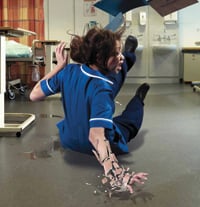 Clean all spills immediately
Clean all spills immediately Schedule calls for times when you will not be driving.
Schedule calls for times when you will not be driving.


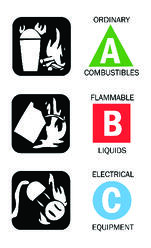
 Once a fire extinguisher has been selected and placed in compliance with OSHA/NFPA standards, you then need to know how to use it. Training for yourself and/or employees is a very important step and should not be overlooked. The unfortunate reality, as you’ll see further below via the NFPA stats, is that fires happen all the time. Having properly learned how to use an extinguisher can save someone’s life. Below you find training specifics, as presented by the 1910.157 OSHA standard guidelines, as well as a few tips for how to engage employees further with hands-on training.
Once a fire extinguisher has been selected and placed in compliance with OSHA/NFPA standards, you then need to know how to use it. Training for yourself and/or employees is a very important step and should not be overlooked. The unfortunate reality, as you’ll see further below via the NFPA stats, is that fires happen all the time. Having properly learned how to use an extinguisher can save someone’s life. Below you find training specifics, as presented by the 1910.157 OSHA standard guidelines, as well as a few tips for how to engage employees further with hands-on training.
 The 2012 U.S. fire loss clock a fire department responded to a fire every 23 seconds. One structure fire was reported every 66 seconds.
The 2012 U.S. fire loss clock a fire department responded to a fire every 23 seconds. One structure fire was reported every 66 seconds.
 SERIOUS:
SERIOUS: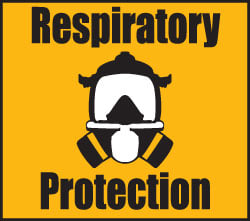
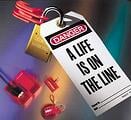 Lockout/Tagout
Lockout/Tagout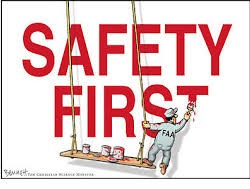 Fall Protection
Fall Protection